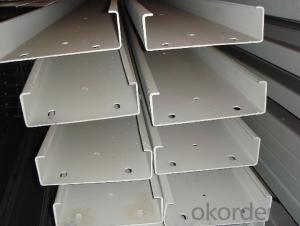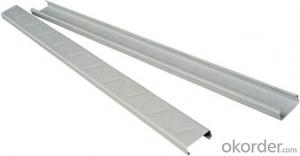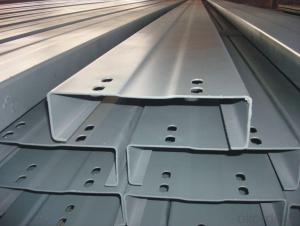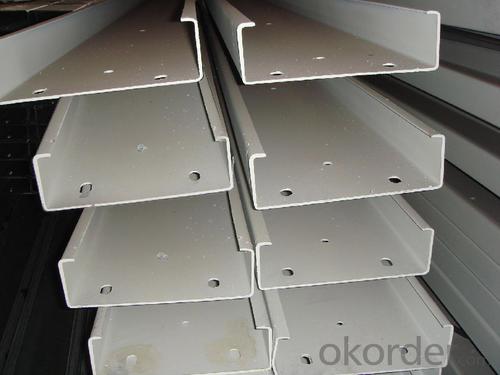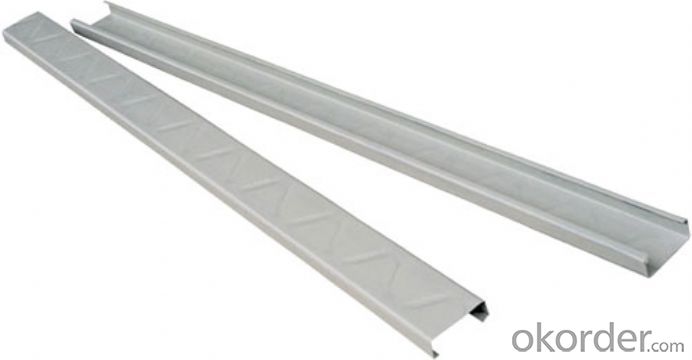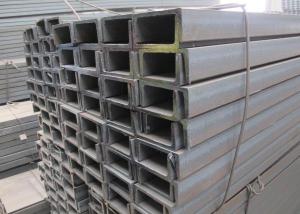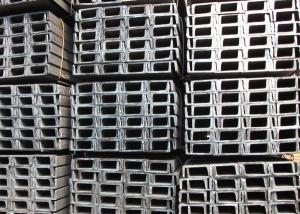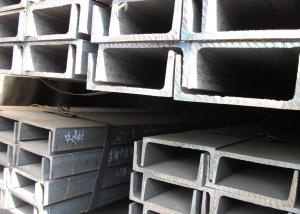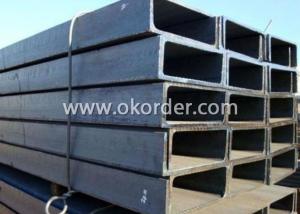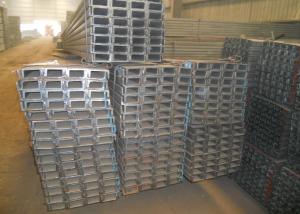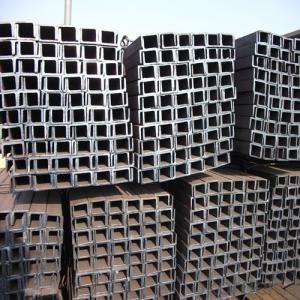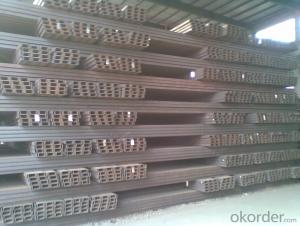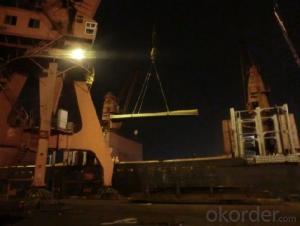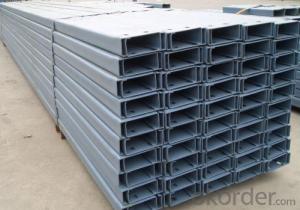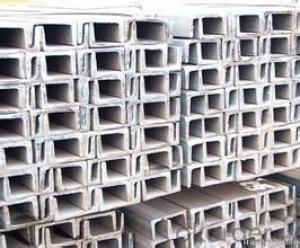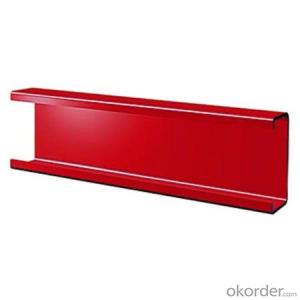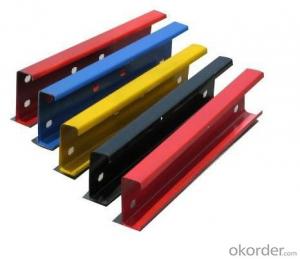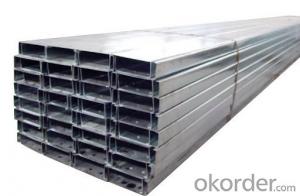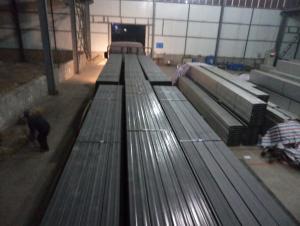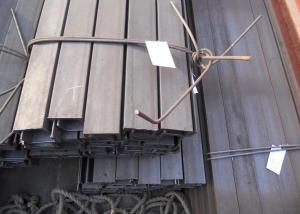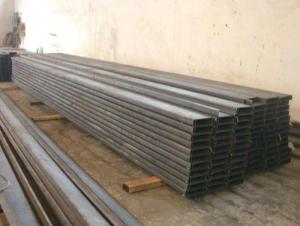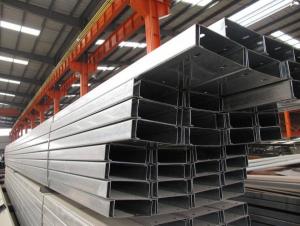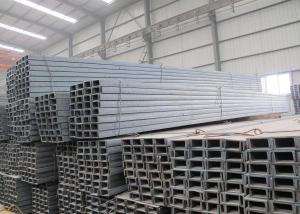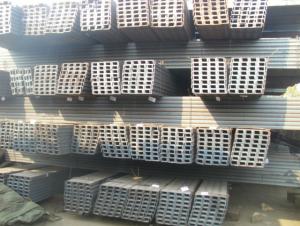Channel Steel Beam C Purlin Galvanized Steel C Channel
- Loading Port:
- Tianjin
- Payment Terms:
- TT or LC
- Min Order Qty:
- 27 m.t.
- Supply Capability:
- 24000 m.t./month
OKorder Service Pledge
OKorder Financial Service
You Might Also Like
Product Description:
OKorder is offering Channel Steel Beam C Purlin Galvanized Steel C Channel at great prices with worldwide shipping. Our supplier is a world-class manufacturer of steel, with our products utilized the world over. OKorder annually supplies products to European, North American and Asian markets. We provide quotations within 24 hours of receiving an inquiry and guarantee competitive prices.
Product Applications:
Channel Steel Beam C Purlin Galvanized Steel C Channel are ideal for structural applications and are widely used in the construction of buildings and bridges, and the manufacturing, petrochemical, and transportation industries.
Product Advantages:
OKorder's Channel Steel Beam C Purlin Galvanized Steel C Channel are durable, strong, and resist corrosion.
Main Product Features:
· Premium quality
· Prompt delivery & seaworthy packing (30 days after receiving deposit)
· Corrosion resistance
· Can be recycled and reused
· Mill test certification
· Professional Service
· Competitive pricing
Product Specifications:
1. Heat-resistant
2. Light weight
3. Easy for assembling
4. High Air Exhausting Efficiency
5. Low cost
Steel Beam C purlin Galvanized Steel C Channel
C&Z purlin is made by cold rollde strips and galvanized steels by roll forming.
| Efective width | 80mm-300mm |
| Length | According customer's request (less than 12m) |
| Materials | Galvanized steel. |
| Thickness | 1.6-3.0mm |
| Surface treatment | Zinc coated or Alu-zine coated. |
Usage
purlin and wall beam of steel structure building
The C-shaped purlins have excellent anti-bending property and are easy to install.
They are widely used as the supporter of roof and wall in large-scale and mid-scale construction,
such as factory, warehouse, garage, exhibition center, cinema, theatre, garden and so on.
Advantage:
(1). Design according to customers’ requirements
(2). Manufacture under complete quality control system---ISO9001:2008
(3). Installation with instruction of experienced engineers
(4). Easy to assemble and dismantle
(5). Eco-friendly material: can be used for several times and can be recycled
(6). Shorter construction period, longer using time
(7). High strength and stiffness, high weight bearing.
FAQ:
Q1: Why buy Materials & Equipment from OKorder.com?
A1: All products offered byOKorder.com are carefully selected from China's most reliable manufacturing enterprises. Through its ISO certifications, OKorder.com adheres to the highest standards and a commitment to supply chain safety and customer satisfaction.
Q2: How do we guarantee the quality of our products?
A2: We have established an advanced quality management system which conducts strict quality tests at every step, from raw materials to the final product. At the same time, we provide extensive follow-up service assurances as required.
Q3: How soon can we receive the product after purchase?
A3: Within three days of placing an order, we will begin production. The specific shipping date is dependent upon international and government factors, but is typically 7 to 10 workdays.
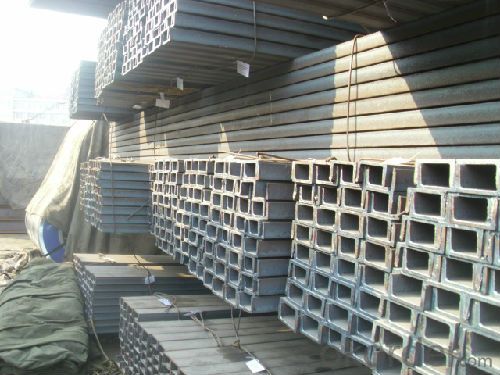
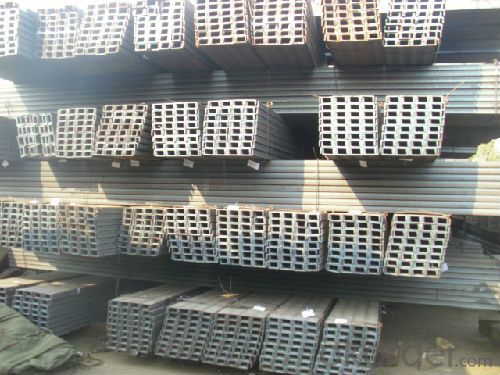
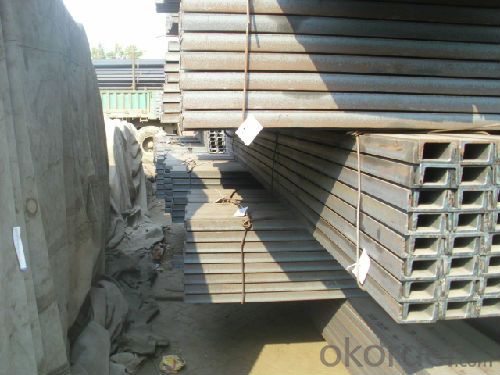
- Q: How are steel channels protected during transportation and storage?
- To ensure the quality and prevent damage of steel channels, various measures are taken during their transportation and storage. Protective coatings or finishes, such as paint or galvanizing, are commonly used to create a barrier between the steel channels and the external environment, thereby preventing corrosion and rusting. During transportation, steel channels are securely bundled and fastened with straps or chains to prevent any movement or potential damage. They may also be placed in crates or containers to provide additional protection and avoid any impact from external forces. For storage, it is important to keep the steel channels in a dry and well-ventilated area to avoid exposure to moisture. Stacking them on pallets or racks helps to prevent direct contact with the ground and minimizes the risk of damage. Moreover, storing them in a covered area or using weatherproof covers provides further protection against precipitation and other weather elements. Regular inspections are crucial throughout transportation and storage to detect any signs of damage or deterioration. This allows for prompt repairs or replacements to be carried out, ensuring that the steel channels remain in optimal condition. In conclusion, proper protective measures, including coatings, secure bundling, appropriate storage conditions, and regular inspections, are indispensable for safeguarding steel channels during transportation and storage, thereby preserving their quality and preventing potential damage.
- Q: Is the bottom of the channel not real? Why do we open the hole? What's the reason?
- Is the most ideal processing equipment of stainless steel and flat iron, steel, steel, iron pipes and other processing households, profile processing businesses.
- Q: What are the factors that affect the strength of steel channels?
- The factors that affect the strength of steel channels include the alloy composition, heat treatment, dimensions (such as width, height, and thickness), shape, and the presence of any defects or imperfections in the material. Additionally, the manufacturing process, including the quality of the steel and any surface treatments or coatings, can also impact the strength of steel channels.
- Q: UAP300 what channel? What specifications?. You great God to explain ah. I am indebted forever urgently.. Thank you ~!
- The UAP channel is the European standard, the same height as the channel width standard half generally weighs about half of GB for no purpose, some necessary standard can save half the cost, which belongs to the light channel.
- Q: What kind of welding rod used for channel steel?
- 20 steel can use knot 422, knot 423, knot 424, knot 425; strength high occasion, knot 506, knot 507. 304 steel with Austria 102, Austria 107, Austria 002 welding rod.
- Q: Do steel channels have any specific magnetic properties?
- Yes, steel channels do have specific magnetic properties. Steel is a ferromagnetic material, which means it can be magnetized and has a strong attraction to magnets. Therefore, steel channels can exhibit magnetic properties and can be used in various applications related to magnetic fields.
- Q: 18# channel perimeter
- Channel 18#A 180*68*7.0 theory weight 20.174, section area 25.69, channel 18#B 180*70*9.0 theory weight 23, section area 29.29, average leg thickness 10.5, inner arc radius 10.5, leg end arc radius 5.25
- Q: How are steel channels installed?
- Steel channels are typically installed by first determining the desired location and alignment. Then, the channels are positioned and secured using appropriate fasteners such as bolts or welds. The process involves ensuring proper anchoring and alignment to ensure structural integrity and stability.
- Q: Could you tell me the theoretical weight and size of 16 and 18 channel steel?
- Channel steel 16#a specifications 160x, 63x, 6.5mm, theoretical weight of 17.24 kg per meterChannel steel 16#b specifications 160x 65 8.5mm, theoretical weight of 19.752 kg per meterChannel steel 18#a specifications 180X, 68x 7 mm, theoretical weight of 20.174 kg per meterChannel steel 18#b specifications 180 X70 x9mm, theoretical weight of 23 kg per meter
- Q: Specification for channel steels used in fork trucks
- General 8 ton forklift optional Q235B 28 a channel, because now the steel rolling generally negative difference, suggested a 30 channel, if the Q345B material, a 25 channel.
Send your message to us
Channel Steel Beam C Purlin Galvanized Steel C Channel
- Loading Port:
- Tianjin
- Payment Terms:
- TT or LC
- Min Order Qty:
- 27 m.t.
- Supply Capability:
- 24000 m.t./month
OKorder Service Pledge
OKorder Financial Service
Similar products
Hot products
Hot Searches
Related keywords
